This 10-12t/h ruminant grass pellet production line in Australia project is a grain + grass pellet production line project, which mainly uses forage and grain as the main raw materials for processing ruminant feed pellets. The client of this project is from Australia and operates an animal product company. Based on the prospects of ruminant feed processing, this large ruminant feed processing project was invested and built.
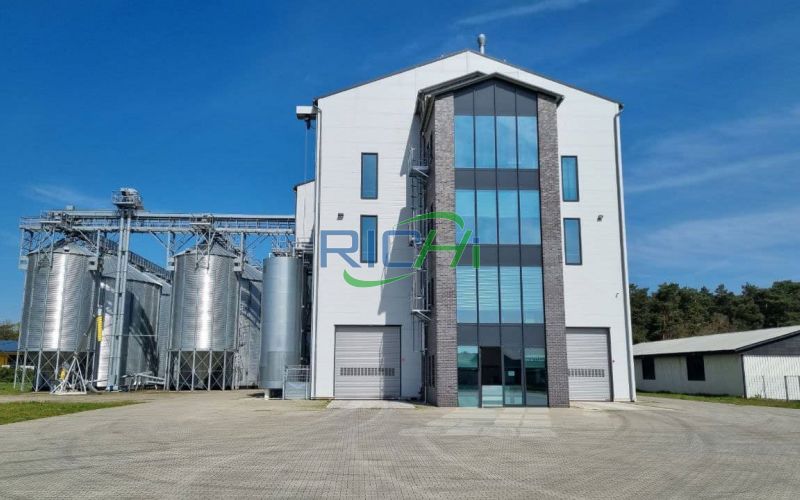
The prospects for building a ruminant grass feed mill in Australia are generally very optimistic. Australia has a developed animal husbandry industry and a strong demand for high-quality feed. At the same time, the government's support for the feed industry is also increasing, providing entrepreneurs with more policy support and financial support.
In addition, as consumers have higher and higher requirements for food safety and quality, they have also put forward higher requirements for the quality and safety of feed, which provides more development opportunities for ruminant cattle feed plants.
Therefore, due to the rapid development of animal husbandry in recent years and the increase in feed demand, in order to adapt to the market, the client of this project, an Australian biotechnology company, invested 620,000 US dollars to build a "new annual production of 80,000 tons of high-end ruminant feed production line project" based on the original animal health product production line.
The customer's project plant currently has 30 people, and this expansion project plans to add 25 more people. All employees do not eat and stay in the plant. The grass pellet production line in Australia project works 300 days a year, with three shifts, 24 hours a day, and an annual operating time of about 7,200 hours.
Name:
Grass feed pellet plant for cattle sheep
Country:
Australia
Date:
2023.12.19
Capacity:
10-12T/H
Pellet Size:
4-8mm
The install period:
50 Days
Control Mode:
Automatic
Guiding Price:
620,000 US dollars
Why did this customer build a ruminant grass feed pellet production line in Australia instead of an ordinary livestock and poultry feed production line?
Because in recent years, competition in the feed market has intensified, the profit margins of pig and poultry feed have continued to decline, and the pig and poultry feed market is relatively saturated. In this case, ruminant feed has received more attention from feed companies with higher profit margins and broad market space.
Feed companies are accelerating the adjustment of product structure, and according to the development status of various regions, they are developing development models suitable for different regions and different types of cattle and sheep industries according to local conditions, and taking ruminant grass feed production as a new growth point for enterprises.
With the growth of beef, mutton and milk consumption, the scale of ruminant farming is getting larger and larger, while the output of industrial feed is far lower than the demand for standardized farming, and the market space for ruminant feed is very broad. The formation of competition in ruminant grass feed production will directly promote the rapid development of ruminant feed and the improvement of its quality level.
The total investment of this 10-12t/h ruminant grass pellet production line in Australia project is US$920,000, and the total area of the plant is 15,677m2. The feeding and packaging of the expansion project rely on the existing feeding workshop and packaging workshop of the plant, and the office area relies on the comprehensive office area of the plant.
The content of this expansion project is: based on the original production workshop, the area is expanded by 108m2, a new feed production line is added, and a 200t soybean meal silo and two 800t corn silos are built. After the expansion is completed, the annual production capacity of 80,000 tons of high-end ruminant feed will be added.
The main construction content is shown in the following table.
| Item | Existing project content and construction scale | Expansion project content and scale | Relying relationship | |||
| Main project | 1# production workshop | Located on the south side of the main road at the entrance of the factory area; it consists of two single-story steel structures and a six-story frame structure; the single-story building on the west side is used as the loading warehouse, running from north to south, with a length of 60m, a width of 40m, and a construction area of 2400m2; the single-story building on the east side is used as the packaging and finished product warehouse, running from north to south, with a length of 60m, a width of 40m, and a construction area of 2400m2; a six-story frame structure, covering an area of 270m2, is used as the main production workshop. A feed production line is set up in the 1# production workshop. | Annual production capacity of 120,000 tons of animal health products | A new loading port is added in the single-story building on the west side. | Annual production of 80,000 tons of high-end ruminant feed | Relying on the existing factory building |
| A new finished product packaging area is added in the single-story building on the east side. | Relying on the existing factory building | |||||
| A new six-story frame structure main production workshop is built on the south side of the existing main production workshop, covering an area of 108m2, and a new feed production line is built. | New factory building | |||||
| 2# production workshop | Located on the north and west side of the main road at the entrance of the factory area; single-story steel structure, east-west direction, length 560m, width 33m, covering an area of 1848m2, building area 1848 m2. | Set up 2 premix production lines. | Rely on the existing factory building | |||
| Storage and transportation engineering | Raw material storage workshop | Located in the factory building on the west side of the 1# production workshop, it is mainly used for the storage of raw and auxiliary materials. | Add a 200t soybean meal silo and two 800t corn silos, and other raw materials rely on the existing raw material storage workshop. | Newly built | ||
| Located in the 2# production workshop, it is mainly used for the storage of raw and auxiliary materials and the storage of semi-finished products after premixing. | Relying on the existing raw material storage workshop, it can meet the requirements of raw material storage after expansion. | Relying on the existing factory building | ||||
| Finished product storage workshop | Located in the factory building on the east side of the 1# production workshop, it is mainly used for the storage of finished products. | It can meet the storage of finished products of the expansion project and the storage requirements of finished products after the expansion. | Relying on the existing | |||
| Auxiliary engineering | Comprehensive office area | Located on the east side of the north side of the main road at the entrance of the factory; three-story concrete structure; covers an area of 464m2, with a construction area of 1392 m2; used for office and product display. | Relying on the existing comprehensive office area, it can meet the office requirements after the expansion. | Relying on the existing brick-concrete structure | ||
| 4# Pump room | Located in the middle of the north side of the main road at the entrance of the factory; single-layer concrete structure; covers an area of 50m2, and a construction area of 50 m2 | Relying on the existing pump room | Relying on the existing | |||
| 5# Gatehouse | Located at the entrance of the factory; single-layer concrete structure; covers an area of 45m2, and a construction area of 45m2 | Relying on the existing gatehouse | Relying on the existing | |||
| 6# Boiler room | Located in the middle of the south side of the main road at the entrance of the factory; single-layer concrete structure; covers an area of 50m2, and a construction area of 50m2 , equipped with a 1t/h natural gas boiler | A new 2t/h natural gas boiler | Relying on the existing, a new boiler | |||
| Public Engineering | Water Supply | The water supply to the factory area is supplied by the local water supply network | The water supply to the factory area is supplied by the local water supply network | Relying on the existing water supply network | ||
The 10-12t/h ruminant grass pellet production line in Australia project product plan is shown in the table below.
| Product Name | Current Production Scale (10,000 tons/a) | New Production Scale (10,000 tons/a) | Product Scale of the Whole Plant after Expansion (10,000 tons/a) | Product Specifications |
| High-end Ruminant Feed | 0 | 8 | 8 | Bagged, barreled, etc. with different specifications |
| Animal Health Products | 12 | 0 | 12 |
The consumption indicators of main raw and auxiliary materials required for 10-12t/h ruminant grass pellet production line in Australia project production before and after expansion are shown in the following table:
| Raw material name | Current usage (t/a) | Annual additional usage (t/a) | Annual usage after expansion (t/a) | Packing method | Maximum storage capacity (t/a) | Transportation method | Remarks |
| Corn | 70000 | 30000 | 100000 | Silo, bagged | 8000 | Automobile | Solid, of which 800t Silo storage |
| Soybean meal | 20000 | 15500 | 35500 | Silo, Bagged | 700 | Transported by truck | Solid, of which 200t silo storage |
| Grass powder | 0 | 5000 | 5000 | Bagged | 500 | Transported by truck | Solid |
| Oat hull | 0 | 6000 | 6000 | td>Bag | 600 | Automobile | Solid |
| Bran | 15000 | 10000 | 25000 | Bag | 500 | Automobile | Solid |
| Wheat middlings | 0 | 8000 | 8000 | Bags | 100 | Automobile | Solid Powder |
| Sprayed Corn Husk | 0 | 3000 | 3000 | Bags | 100 | Automobile | Solid |
| Soybean Oil | 2000 | 500 | 2500 | Canned | 1000 | Automobile | Liquid |
| Fish meal | 2000 | 0 | 2000 | Bagged | 200 | Automobile | Solid powder |
| Whey powder | 3000 | 0 | 3000 | Bagged | 300 | Automobile | Solid Powder |
| Stone Powder | 3000 | 1400 | 4400 | Bagged | 300 | Automobile | Solid Powder |
| Compound Additive | 5150 | 0 | 5150 | Bag | 500 | Automobile | Solid |
| Nutrients | 0 | 600 | 600 | Bag | 200 | Automobile | Solid Powder |
| 98% Sulfuric Acid | / | 2.5L | 2.5L | Bottle | 1 | / | Liquid |
| Methanol | / | 2.5L | 2.5L | Bottle | 1 | / | Liquid |
| Hydrochloric Acid | / | 5 L | 5 L | Bottle | 1 | / | Liquid |
| Sodium Hydroxide | / | 10KG | 10KG | Bottle | 4 | / | Solid |
| Potassium Hydroxide | / | 2 KG | 2 KG | Bottle | 2 | / | Solid |
| Potassium Sulfate | / | 5 KG | 5 KG | Bottle | 2 | / | Solid |
| Copper Sulfate | / | 1 KG | 1 KG | Bottle | 1 | / | Solid |
| Water | 1923 | 5712 | 7635 | / | / | / | Municipal water supply network |
| Electricity | 100,000 kWh | 100,000 kWh | 200,000 kWh | / | / | / | Municipal power supply network |
| Natural gas | 100,000 m3/a | 400,000 m3/a | 500,000 m3/a | / | / | / | Municipal gas supply network |
The physical and chemical properties of the main raw and auxiliary materials used in this 10-12t/h ruminant grass alfalfa pellet production line in Australia project are shown in the table below.
| Name | Important components |
| Corn | High available energy value; high linoleic acid content; slightly poor protein quality, low content of several essential amino acids such as lysine and tryptophan; rich in minerals; high vitamin content. |
| Soybean meal | Soybean meal is the largest and most widely used of 12 kinds of animal and plant oil meal products such as cottonseed meal, peanut meal, and rapeseed meal. The crude protein content in soybean meal is as high as 30-50%, which is one of the main sources of protein for animals and the main raw material for livestock and poultry feed. It can also be used to make pastry food, health food, cosmetics and antibiotic raw materials. |
| Grass powder | The grass powder used in the project is mainly common grass powder, such as alfalfa powder, hay powder, Timothy grass powder, etc. |
| Oat hull | Oat hull is a by-product made from oat processing, which is very rich in nutrients, including dietary fiber, protein, minerals, vitamins, etc. In particular, it has a high dietary fiber content and has a good effect of aiding digestion and regulating intestinal function. This is also one of the main reasons why oat hulls are widely used in ruminant feed. |
| Wheat middlings | It is a by-product of wheat processing, mainly composed of fine bran and part of wheat endosperm. It is one of the by-products obtained by grinding various flours with wheat grains as raw materials. It is rich in protein, dietary fiber, vitamins, minerals, etc., contains about 30% starch, and is very nutritious. |
| Sprayed corn husk | Sprayed corn husk, also known as corn bran or corn protein feed, is a byproduct of corn humidification to produce starch and germ, and then the corn slurry with high protein and energy is sprayed on it to greatly increase the content of protein, energy and amino acids. The appearance of this product is yellow. |
| Soybean oil | Soybean oil is taken from soybean seeds. Soybean oil is the most produced oil in the world. Oil is a high-energy source: the energy of oil is equivalent to 2.25 times that of carbohydrates and proteins. Adding oil can easily make it into a high-energy raw material, which is especially important for animals. |
| Fish meal | Fish meal is made from one or more fish as raw materials, and is a high-protein raw material after degreasing, dehydration and crushing. The powder does not contain cellulose and other difficult-to-digest substances, and the crude fat content is high. The effective energy value of fish meal is high. In production, it is easy to make high-energy raw materials using fish meal as raw material. |
| Bran | is the outermost epidermis of wheat. After being processed by a flour mill, wheat becomes flour and bran. Bran is the outer skin of wheat and is mostly used as feed. |
| Whey powder | is generally a high-protein whey powder containing 65% to 75% lactose and about 12% crude protein. There are also low-protein whey powder or medium-protein whey powder containing 75% to 80% lactose and about 3% crude protein. Whey powder can provide a large amount of lactose, which can produce a large amount of lactic acid when fermented in the animal digestive tract, reduce the pH value, help digestion of milk, and inhibit the growth of pathogenic bacteria, which is of great significance to animal health. |
| Stone Powder | The recommended dosage of stone powder ruminant formula should be determined according to the weight and age of the ruminant. Generally speaking, it is recommended to use a ratio of 5% to 8%. |
| Compound Additives | These anti-mold additives have the function of destroying or blocking pathogenic microorganisms, but will not hinder the activities of normal beneficial bacteria and enzymes in the digestive tract. Some can also change the taste and improve palatability. |
| Nutrients | Calcium hydrogen phosphate, calcium citrate, calcium iodate, phytase, compound enzyme, sodium chloride, lysine, flavoring agent, sweetener, compound vitamin, copper sulfate, ferrous sulfate, ferrous glycine, magnesium sulfate, manganese sulfate, sodium selenite |
The main production equipment of the 10-12t/h ruminant grass pellet production line in Australia project is detailed in the table below.
| Serial number | Equipment name | Model | Quantity |
| Silo | |||
| 1 | Unloading pit pulse | TBLM48 | 2 |
| 2 | Dust removal fan | 4-72-5A | 2 |
| 3 | Unloading scraper | TGSS25×8.5m | 1 |
| 4 | Bucket elevator | TDTG50/28×34.2m 100m3/H | 1 |
| 5 | Roof scraper | TGSS25×25.3m | 1 |
| 6 | Self-cleaning electric gate | TZMD25×60 | 1 |
| 7 | Manual gate | TZMS30 | 3 |
| 8 | Electric/manual gate | TZMD/S30 | 1 |
| 9 | Soybean meal dispensing device | TLSS20×4 lian | 1 |
| 10 | Dispensing device maintenance platform | 1 | |
| 11 | 1##Dispensing scraper | TGSS20×30.2m | 1 |
| 12 | 2#Dispensing scraper | TGSS20×11m | 1 |
| Raw material receiving and cleaning system | |||
| 1 | Centrifugal fan | 4-72-3.6A-2-3kW | 1 |
| 2 | Silencer | XSQ250 | 1 |
| 3 | Pulse cloth drum dust collector | LNGM18 | 1 |
| 4 | Manual feeding hopper | 1660×1700 | 1 |
| 5 | Scraper conveyor | TGSP20 | 1 |
| 6 | Bucket elevator | TDTG4028 | 1 |
| 7 | Spiral auger | TLSUs32 | 1 |
| 8 | Pulse cloth dust collector | TBLMb4 | 2 |
| 9 | Cone powder primary sieve | SCQZ90×80×110 | 1 |
| 10 | Permanent magnetic cylinder | TCXT25 | 2 |
| 11 | Rotary distributor | TFPX12-250 | 2 |
| 12 | Pneumatic round tee | BDQY25×25/30° | 1 |
| 13 | Scraper conveyor | TGSP25 | 1 |
| 14 | Drum primary cleaning screen | TCQY80 | 1 |
| Crushing system | |||
| 1 | Loading level device | 1 | |
| 2 | Crushing bin | 1 | |
| 3 | Under-loading level device | 1 | |
| 4 | Pneumatic gate | TZMQ40×40 | 1 |
| 5 | Pneumatic round tee | BDQY25×25/30° | 4 |
| 6 | Crushing feed hopper | 1 | |
| 7 | Impeller feeder | TWLY20×80 | 1 |
| 8 | Hammer crusher | SWFP66×80 | 1 |
| 9 | Crushing sedimentation bucket | 1 | |
| 10 | Pneumatic hammer | BAH-40KA | 1 |
| 11 | Material sealing auger | TLSGF25 | 1 |
| 12 | Silencer | XSQ480 | 1 |
| 13 | Centrifugal Fan | 4-72-5 | 1 |
| 14 | Manual Butterfly Valve | SDFS40 | 1 |
| 15 | Crushing wind screen | 1 | |
| 16 | Pulse drum dust collector | LNGM45 | 1 |
| 17 | Bucket elevator | TDTG4028 | 1 |
| 18 | Vibrating grading screen | SFJ Z120*1 | 1 |
| 19 | Distributor feed hopper | 1 | |
| 20 | Rotary distributor | TFPX12-250 | 1 |
| 21 | Pulse drum dust collector | TBLMb4 | 1 |
| Batching and mixing system | |||
| 1 | Upper level device | 1 | |
| 2 | Batching bin | 1 | |
| 3 | Lower level device | 1 | |
| 4 | Air hammer | BAH-60KA | 1 |
| 5 | Pressure reducing bucket | 1 | |
| 6 | Batching auger | TLSUw32 | 1 |
| 7 | Batching auger | TLSUw25 | 1 |
| 8 | Batching auger | TLSUw25 | >1 |
| 9 | Batching auger | TLSUw20 | 1 |
| 10 | Batching auger | TLSUw16 | 1 |
| 11 | Pneumatic butterfly valve | DN200 | 1 |
| 12 | Batching scale | PLDY1000 | 2 |
| 13 | Batching scale door | CJCM50 | 2 |
| 14 | Pneumatic butterfly valve | DN400 | 1 |
| 15 | Return air duct | φ250 | 1 |
| 16 | Pneumatic butterfly valve | DN25 0 | 1 |
| 17 | Pneumatic butterfly valve | DN400 | 1 |
| 18 | Return material hopper and screen | 1 | |
| 19 | Pneumatic gate | TZMQ30×30 | 1 |
| 20 | Pulse cloth drum dust collector | TBLMb4 | 1 |
| 21 | Small material adding hopper | 1 | |
| 22 | Pneumatic gate | TZMQ30×30 | 1 |
| 23 | Pneumatic round tee | BDQY25×25/30° | 3 |
| 24 | Batching scale | PLDY100 | 1 |
| 25 | Pneumatic hammer | BAH-40KA | 2 |
| 26 | Batching scale door | CJCM50 | 1 |
| 27 | Pneumatic butterfly valve | DN250 | 1 |
| 28 | Double-shaft paddle type high-efficiency mixer | SLHS2 | 1 |
| 29 | Mixing buffer hopper | >2m3 | 1 |
| 30 | Material level meter | 1 | |
| 31 | Air hammer | BAH-40KA | 1 |
| 32 | Scraper conveyor | TGSP20 | 1 |
| 33 | Bucket elevator | TDTG4028 | 1 |
| 34 | Permanent magnet tube | TCXT25 | 1 |
| 35 | Pulse cloth drum dust collector | TBLMb4 | 1 |
| 36 | Distributor feed hopper | 1 | |
| 37 | Rotary distributor | TFPX4-250 | 1 |
| Pelletizing system | |||
| 1 | Loader | 1 | |
| 2 | Pelletizing bin | 1 | |
| 3 | Air hammer | BAH-40KA | 1 |
| 4 | Under-loading positioner | 1 | |
| 5 | Pneumatic gate | TZMQ60×60 | 1 |
| 6 | Pneumatic hammer | BAH-60KA | 1 |
| 7 | Pellet feeding hopper 1 8 Material level indicator 1 9 Feeder CJWL420 1 10 Paddle conditioner CJTZ420×2JCJ /td> | 1 | |
| 11 | Grass Pellet Machine | SZLH420 | 1 |
| 12 | Pelletizing hopper | 1 | |
| 13 | Impeller air shutoff | SGFY36 | 1 |
| 14 | Counterflow Pellet Cooler | SKLN24×24 | 1 |
| 15 | Centrifugal Fan | SFJ352-3.6C | 1 |
| 16 | Silencer | XSQ610 | 1 |
| 17 | Cyclone | SKLX55-1600 | 1 |
| 18 | Air shut-off device | GFWZY-12 | 1 |
| 19 | Manual butterfly valve air net | SDFS61 | 1 |
| 20 | Bucket Elevator | TDTG4028 | 1 |
| 21 | Rotary Vibrating Classifying Screen | SFJH130×3 | 1 |
| 22 | Pneumatic Round Tee | BDQY20×20/30° | 1 |
| 23 | Pulse drum dust collector | TBLMb4 | 1 |
| 24 | Distributor feed hopper | 1 | |
| 25 | Rotary distributor | TFPX6-200 | 1 |
| Finished product packaging system | |||
| 1 | Loader | 2 | |
| 2 | Finished product warehouse | 1 | |
| 3 | Anti-grading and crushing device | 1 | |
| 4 | Underloader | 2 | |
| 5 | Pneumatic gate | TZMQ40×40 | 2 |
| 6 | Packaging buffer bucket | 1 | |
| 7 | Material level indicator | 1 | |
| 8 | Belt feeding single scale bucket | PDC50 | 1 |
| 9 | Pulse cloth dust collector | TBLMY15 | 1 |
| 10 | Centrifugal fan | 4-72-3.6A-2-3kW | 1 |
| 11 | Manual butterfly valve | SDFS30 (under the wind net) | 1 |
| 12 | Silencer | XSQ300 | 1 |
| 13 | Scraper conveyor | TGSP20 | 2 |
| 14 | Rotary distributor | TFPX4-250 | 1 |
| 15 | Finished product bulk bin | 1 | |
| 16 | Anti-grading crushing device | 1 | |
| Auxiliary system | |||
| 1 | Large oil tank | 30m³ | 1 |
| 2 | Pumping system | MSBS40 | 1 |
| 3 | Daily oil tank | MSYG1 | 1 |
| 4 | Pumping system | MSBS40 | 1 |
| 5 | Scale liquid adding system | SYTC50 | 1 |
| 6 | Liquid adding pipeline | 1 | |
| 7 | Steam system | 1 | |
| 8 | Compressed air system | 1 | |
| 9 | Palletizer | 1 | |
| 10 | Lifting system | 1 | |
Based on the customer's raw material and process requirements, RICHI engineers designed the process for this 10-12t/h ruminant grass pellet production line in Australia project as follows:
Corn, soybean meal and other raw materials are fed into the cleaning grid manually, and the materials are transported to the cylindrical primary cleaning screen by a bucket elevator. The large impurities in the materials are screened out by the cylindrical primary cleaning screen, and the ferrous impurities in the materials are removed by the gyromagnetic iron remover, and then enter the silo for temporary storage.
During production, the pellets are fed into the pellet feeding hopper through a scraper conveyor belt, and the materials are transported to the cylindrical primary cleaning screen by a bucket elevator. The large impurities in the materials are screened out by the cleaning screen, and the ferrous impurities in the materials are removed by the permanent magnetic iron remover, and then enter the crushing bin for standby use.
Materials that do not need to be crushed (such as grass powder, stone powder, etc.) are fed and lifted by a bucket elevator into the conical powder screen to clean out the large impurities in the materials, and the ferrous impurities in the materials are removed by the permanent magnetic cylinder, and then enter the rotary distributor to be distributed to the batching bin for standby use.
The type of raw material to be fed is instructed by the central control room and displayed on the LED display screen at the feeding port. The feeding amount is monitored by the upper level device. When the upper level device alarms, feeding stops.
The remaining amount of material in each bin will be simulated and displayed on the computer screen. When the material in the bin is insufficient, the lower level device alarms, and the central control worker issues feeding instructions and what kind of material to feed to the feeding personnel.
The material entering the crushing bin is evenly fed into the crusher through the stone removal impeller feeder. The central control worker monitors the current of the crusher. When the lower level alarm of the crushing bin sounds, it means that the material in the bin is about to run out.
The central control worker issues instructions to the feeding point. What kind of material to feed and how much to feed are controlled by the central control room. Under the joint action of the fan, pulse bag dust collector, and sedimentation chamber, the material that meets the screening conditions is conveyed to the bucket elevator by the material seal screw under the action of negative pressure.
The bucket elevator conveys the material to the rotary distributor and distributes it to the batching bin for use. The stone-removing impeller feeder and the magnetic plate with stone and iron removal can filter out the stones and iron impurities in the material again to avoid damage to the crusher and its vulnerable parts.
The materials entering the batching bin are batched by computer and transported to the batching weighing bucket by the batching auger. The amount of each material is determined according to the size of the formula.
After the batching is completed, the pneumatic weighing door opens and the material is placed in the mixer; the small materials (core materials) are batched manually or by a micro-batch device, and then enter the mixer according to the instructions. The type and weight of the small materials to be added can only be completed after the central control room gives an instruction. After the small materials are added, the mixing time countdown begins.
After the mixing time has passed 60-90S, the mixing uniformity requirement CV≤5% is achieved. The mixed finished powder passes through the mixer door and enters the buffer bucket. After the scraper conveyor enters the permanent magnetic drum to remove iron impurities, it enters the granulation section. The materials that need to be pelletized enter the pelletizing bin, and the feeding amount is monitored by the upper level sensor.
When the lower level sensor alarms, feeding starts; when the upper level sensor alarms, feeding stops. The materials that do not need to be pelletized enter the finished product bin to be packaged. If the materials need to be returned to the machine, they are returned to the batching bin for use.
The materials entering the pelletizing bin are fed to the conditioner after the feeding auger is turned on in the central control room. After the feed pellet machine is turned on, the materials are tempered in the conditioner and with the steam entering the conditioner before entering the grass ruminant feed pellet machine for pelleting.
The temperature of the steam is relatively high, and the temperature of the materials is increased to a certain extent when it contacts the materials. The materials with increased temperature are easier to form when they are extruded by the pelletizing chamber mold.
After high-temperature sterilization, the bacteria rate of the feed pellets is low, and the animals will not get sick after eating them, and they are easy to digest. The steam will cool down after contacting the powder, and have a moistening effect on the surface of the materials. In the process of making pellets with the grass pellet machine, the output is increased and the pellets are full and beautiful. After passing through the air lock, the ruminant feed pellets enter the cooler.
The time in the cooler is controlled by the cooler's material level device. When the material reaches the upper material level device, the cooler discharge device opens and the material is discharged. The cooling effect of the cooler is controlled by the cyclone dust collector and the cooling fan. The material settled in the cyclone dust collector enters the bucket elevator through the air lock.
The material cooled by the cooler enters the rotary grading screen through the bucket elevator. The material that meets the requirements after screening by the rotary grading screen enters the packaging bin through the tee and waits for packaging. The feed amount is monitored by the upper material level. The lower material level device alarms and the feeding starts; the upper material level device alarms and the feeding stops.
The large impurities after screening are connected to the lower crusher of the cooler or discharged to the first floor, and the small impurities pass through the tee and are connected to the granulation buffer bucket on one side. After changing the variety, they are connected to the first floor for manual packaging.
The materials entering the finished product warehouse enter the three-way after the gate is opened in the central control room. The materials that need to be screened are screened by the vibrating screen and then enter the packaging scale for packaging.
The materials that do not need to be screened enter the packaging scale directly for packaging. The dust removal of the packaging scale is jointly performed by the pulse bag dust collector and the fan.
The production plant of this 10-12t/h ruminant grass pellet production line in Australia project is located in the southern part of the factory area. The plant adopts a steel frame structure with three sides blocked. The production equipment is installed in the middle of the ruminant cattle grass feed plant.
The raw material warehouse is located on the west side of the factory area, and the finished product warehouse is located on the east side of the factory area, forming a "raw material-processing-finished product" transportation line. The boiler room is located on the north side of the main production workshop.
The office building and dormitory building are located on the northeast side of the factory area, far away from the production workshop.
The production area is relatively separated from the office area and the living area by a certain distance, which not only meets the production process requirements and beautifies the environment, but also reduces the impact of exhaust gas and noise generated in the production area on the office area and the living area. In summary, the general plan layout of this project is basically reasonable.
| Item | Pollution source | Pollutant item | Environmental protection measures | Implementation standard |
| Atmospheric environment | Waste gas from unloading shed | Particle matter | Pulse bag dust collector + 15 High exhaust pipe (DA003) | Comprehensive Emission Standards for Air Pollutants |
| Feeding Waste Gas | Particulate Matter | Pulse Bag Dust Collector+15 High Exhaust Stack (DA004) | ||
| Crushing Waste Gas | Particulate Matter | Pulse Bag Dust Collector+15 High Exhaust Stack (DA005) | ||
| Packaging Waste Gas | Particulate matter | Pulse bag dust collector + 15 High exhaust pipe (DA006) | ||
| Premixed dust | Particulate matter | Pulse bag dust collector + 15 High exhaust pipe (DA007) | ||
| Boiler exhaust gas | Particulate matter, nitrogen oxides, sulfur dioxide | Low nitrogen burner + 8 High exhaust pipe | Gas boiler exhaust gas SO2 and smoke emissions comply with the "Boiler Air Pollutant Emission Standards" | |
| Production workshop | Particle matter | / | "Integrated Air Pollutant Emission Standards" | |
| Surface water environment | Domestic sewage | COD, SS, NH3-N, BOD5 | Septic tank (based on existing) | Meet the "Integrated Sewage Emission Standards" |
| Sound environment | Equipment operation noise | Noise | Use various noise elimination, sound absorption, vibration reduction and sound insulation comprehensive control measures to reduce noise at the sound source and transmission path. For noise, a special sound insulation cabin is set up to Reduce the intensity of noise sources; strengthen greening | Meet the "Environmental Noise Emission Standards for Industrial Enterprises" |
| Solid Waste | General industrial solid waste is entrusted to the sanitation department for unified treatment or recycling; hazardous waste is entrusted to qualified units for unified collection and disposal. All types of solid waste can be reasonably treated and disposed of, and will not be lost to the external environment, and will not cause secondary pollution to the surrounding environment | |||
| Soil and groundwater pollution prevention and control measures | The factory area of this project is hardened with cement, and the area of the hazardous waste temporary storage room is focused on anti-seepage. The possibility of groundwater and soil pollution is very small, and it does not involve any process that may cause groundwater and soil environmental risks, so groundwater and soil environmental impact assessments can be omitted. Anti-seepage requirements: Zoning anti-seepage, the area that needs to be focused on anti-seepage is mainly the hazardous waste temporary storage room; the general pollution prevention and control area mainly includes other areas of the production plant. The anti-seepage design of general anti-seepage areas shall meet the "Pollution Control Standards for Industrial Solid Waste Storage and Landfill", and the anti-seepage design of key and special pollution areas shall meet the "Pollution Control Standards for Hazardous Waste Landfill". | |||
| Ecological Protection Measures | There are no nature reserves, scenic spots, forest parks, and no rare or endangered species on the land of this project. The pollutants generated during the operation of this project can be well controlled and treated, so the construction of this project will not have an adverse impact on the local ecological environment. | |||
At present, we have built more than 20 pellet production line projects in Australia, including cattle feed production line, pure grass feed production line, alfalfa pellet production line, poultry feed production line, biomass pellet production line, wood pellet production line, oat pellet production line, oat shell pellet production line, nut shell pellet production line, straw pellet production line, organic fertilizer pellet production line, waste paper pellet production line, rat poison pellet production line, etc.
We are very familiar with the construction process of pellet production line projects in Australia and have rich experience. If you are interested in our ruminant grass pellet production line in Australia project, feel free to contact RICHI MACHINERY to get solutions and a full set of equipment quotes, plant construction process, water and electricity consumption and other professional technical information!
Having the right mix of reliable, high-quality pellet machine and pelletizing systems and expert support is essential to your success. Watch how our end-to-end feed pellet plant solutions have helped our customers optimize their performance.
Our customized and future-proofed turnkey pellet plant solutions is designed with you at the core. From vision to reality and beyond, our team stays connected with yours. Giving you peace-of-mind with an expert at your side.
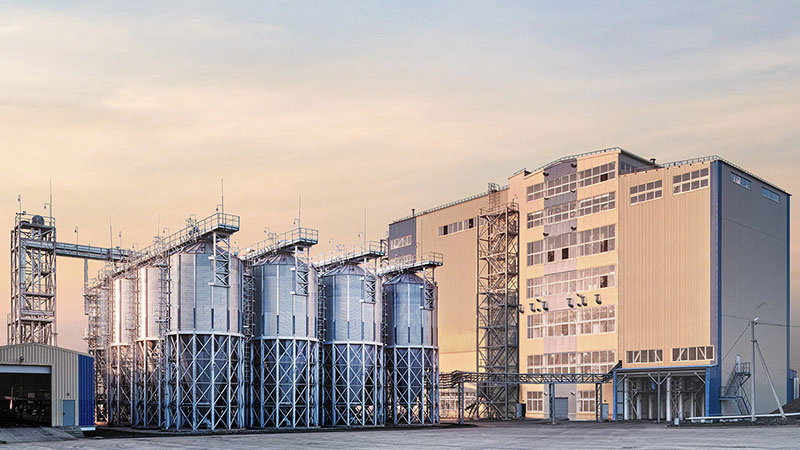
At RICHI, we go beyond project completion. With RICHI Servicee, we’re your dedicated partners in success. Count on us for expert guidance, minimal downtime, and optimized productivity. Choose RICHI for unmatched service and support.
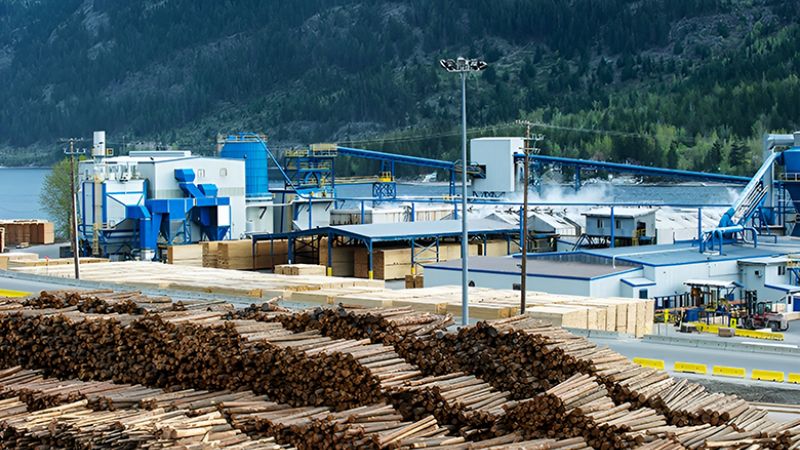
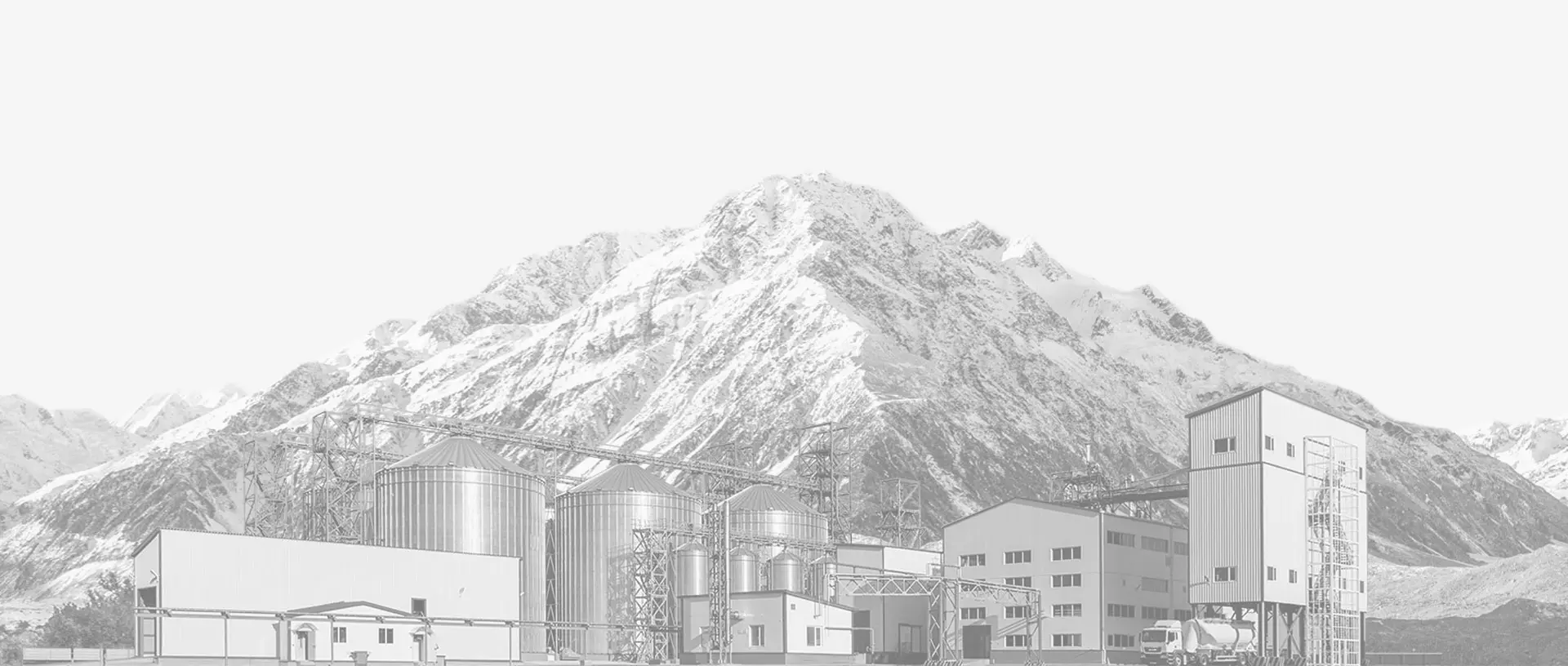

Meet global product demands and quality standards with industry-leading pellet plant design, engineering, equipment, and construction services for pellet processors.
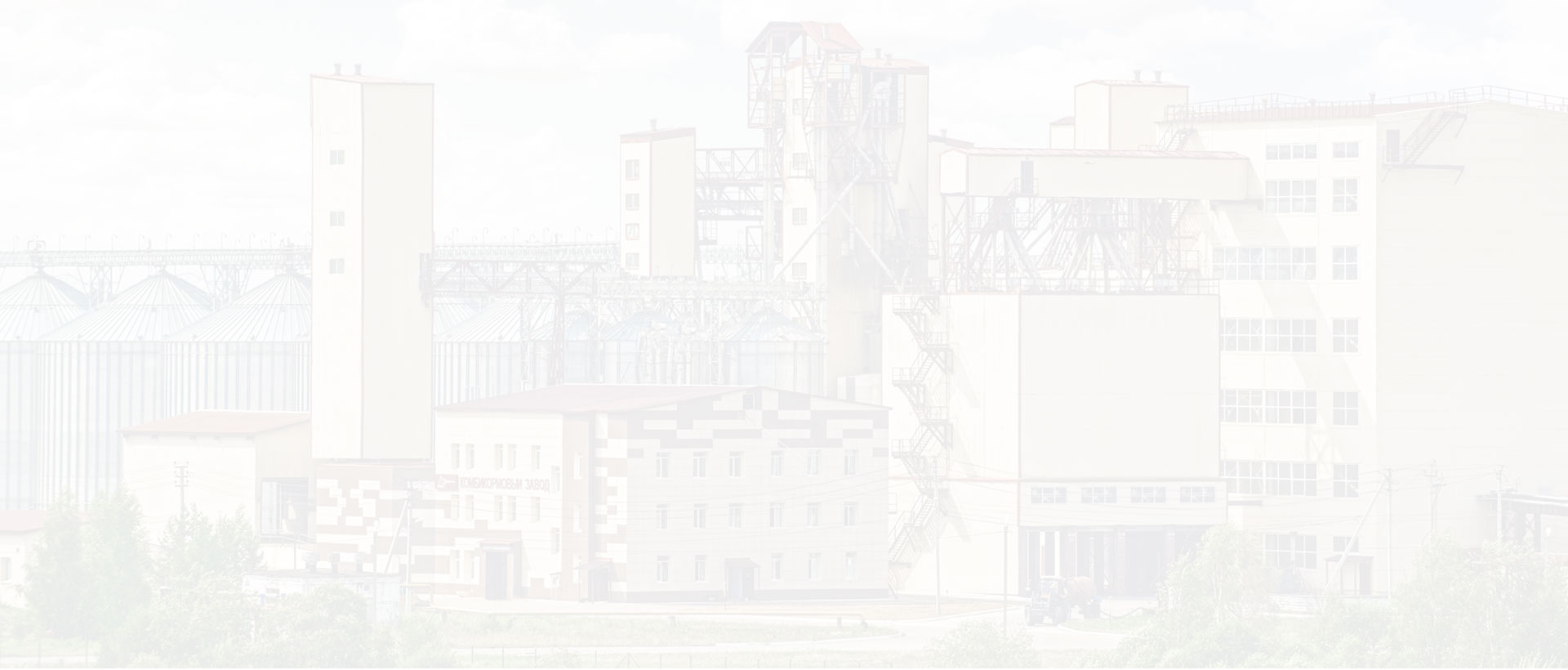
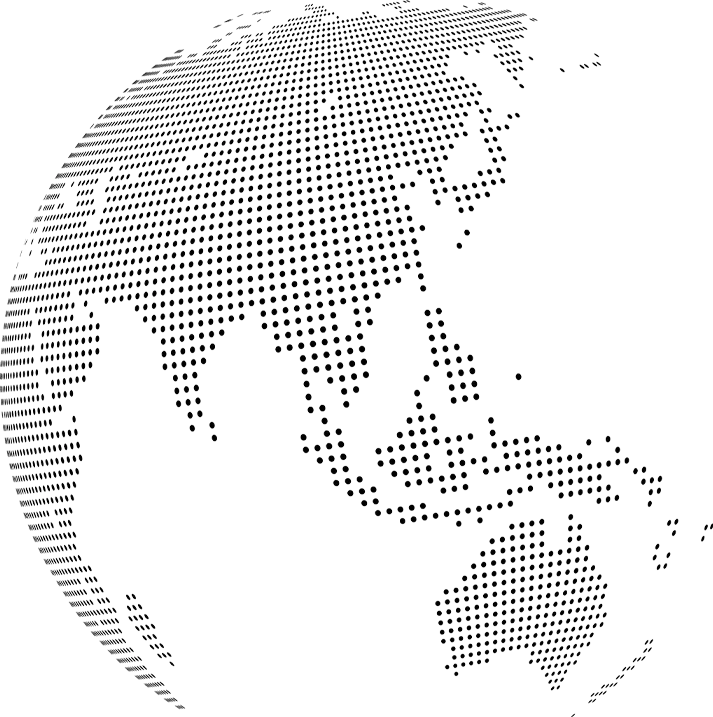
Your Partner Beyond Project Completion
2000+ cases
RICHI is the leading designer, manufacturer and builder of pellet plants in the world, completing over 2000 projects in 140 countries across 6 continents.
Read More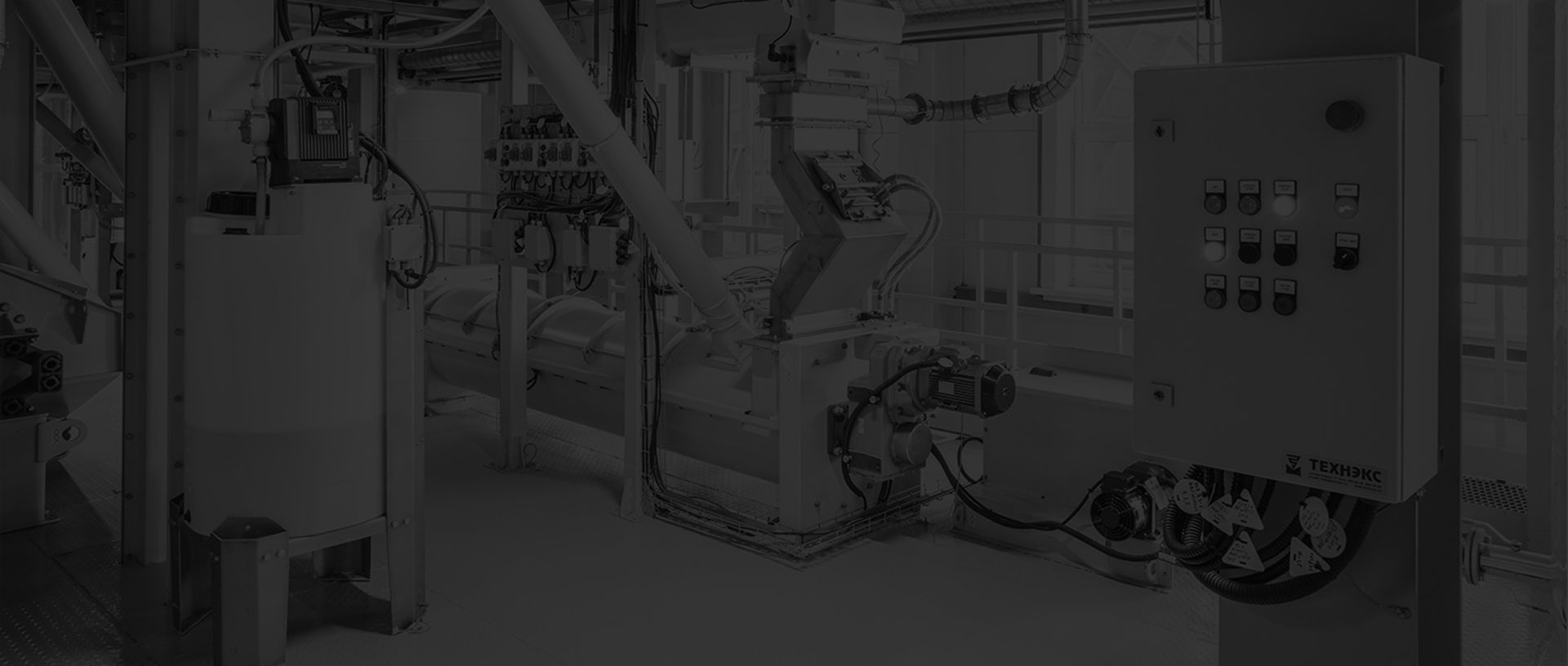
Increase plant productivity, profitability, and safety by integrating high quality equipment into your pellet production line. Over the years, RICHI has become China's top pellet equipment manufacturer. At the same time, RICHI has established valuable partnerships with the world's leading component and raw material manufacturers to bring you the best there is in technology, automation, and efficiency in pelleting plant machinery.
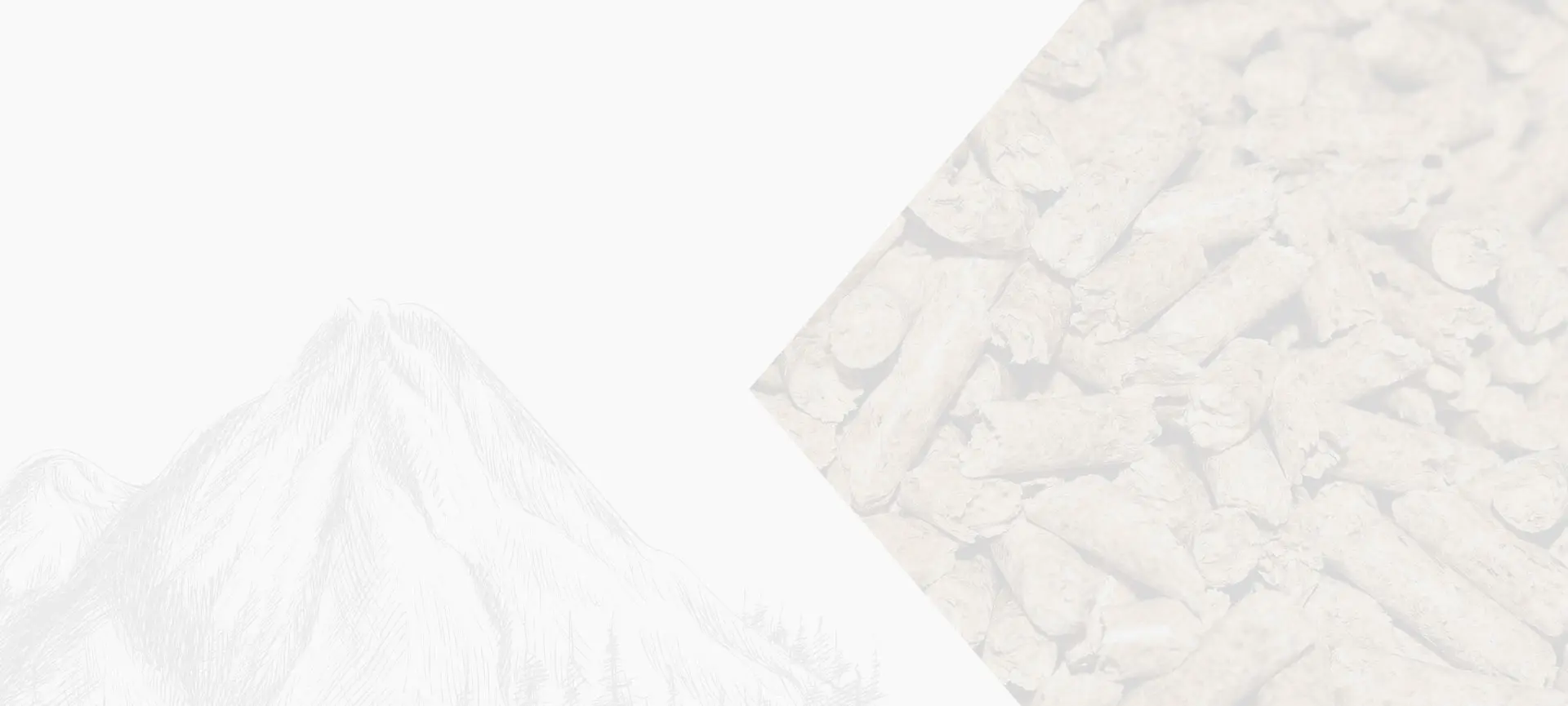
For nearly 30 years, RICHI has been providing best-in-class pellet plant equipment and services to clients across a variety of industries, sizes, and needs. We pride ourselves on the knowledge and skill that each team member possesses – from our technical sales team to our process design engineers. You can count on RICHI Machinery to take your operation to the next level of innovation, quality, and success.
Need help with your pellet manufacturing plant project? Contact us today.
ANIMAL FEED
BIOMASS
WOOD
ORGANIC FERTILIZER
AQUA FEED
CAT LITTER
MUNICIPAL WASTE RECYCLING
SPECIAL PELLET PRODUCTION
RICHI Machinery continues to deliver world class pellet mill equipment, pellet plant engineering and project solutions that add value to our customers in the animal feed, wood waste, agriculture waste, organic fertilizer, cat litter and special pellet products industries. Throughout the years, we RICHI Machinery have built strong brand, becoming industry-leading pellet machine manufacturer. We value integrity, promise quality, and prioritize your success.
Learn MoreWith our expert team, we precisely implement your process engineering requirements in pellet mill and pelletizing plant systems. No matter which industry you’re in – we understand your needs and deliver solutions that meet the highest standards.
At RICHI, quality comes first. Our pellet making machine and related pellet line equipment undergo rigorous quality controls to ensure they meet the highest standards. Rely on products that are durable, safe, and efficient.
With decades of experience in pellet machine and pellet production line production, we have earned a reputation as a trusted partner in various industries. Our expertise allows us to cover a wide range of applications.
Not only do we offer premium pelleting equipment, but we are also experts at designing, building, installing, and maintaining facilities from the ground up. Our expertise is within pellt plant process design, discovering the most efficient, productive, and profitable way to handle your materials in an end-to-end cycle.

Keeping in touch with us is an effective way to solve all your problems. If you have any needs or questions, please leave your contact information, then RICHI technical consultants will send design, quotation, videos to your mailbox. You can also contact us directly via WhatsApp: +86 13838389622
Copyright©2015-2024 by HENAN RICHI MACHINERY CO., LTD. All rights reserved.